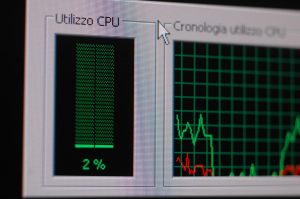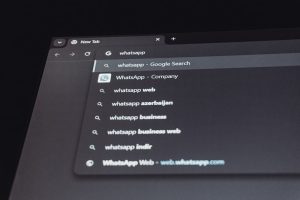The 7 Chrome Flags You Should Enable (And 2 You Shouldn’t)
3 min read
Google Chrome is undoubtedly one of the most popular web browsers worldwide, renowned for its speed, reliability, and extensive feature set. However, beneath its user-friendly interface lies a treasure trove of hidden settings and experimental features known as Chrome Flags. These Flags allow users to customize and enhance their browsing experience, from boosting performance to enabling cutting-edge functionalities. In this article, we’ll explore seven Chrome Flags that you should enable to unlock new capabilities and productivity tools, as well as two Flags you should approach with caution.

1. Smooth Scrolling (chrome://flags/#smooth-scrolling)
Smooth Scrolling enhances the scrolling experience by providing smoother and more fluid scrolling animations. Enabling this Flag can make navigating web pages feel more natural and responsive, particularly on devices with high-refresh-rate displays. To enable Smooth Scrolling, simply navigate to chrome://flags/#smooth-scrolling, enable the feature, and relaunch the browser.
2. Parallel Downloading (chrome://flags/#enable-parallel-downloading)
Parallel Downloading accelerates the download process by splitting large files into smaller chunks and downloading them simultaneously. This Flag can significantly reduce download times, especially for large files or slow internet connections. To enable Parallel Downloading, visit chrome://flags/#enable-parallel-downloading, enable the feature, and relaunch Chrome.
3. Tab Groups (chrome://flags/#tab-groups)
Tab Groups organizes your open tabs into customizable groups, allowing you to declutter your browser window and improve tab management. With Tab Groups enabled, you can create, name, and color-code tab groups to stay organized and focused while browsing. To enable Tab Groups, go to chrome://flags/#tab-groups, enable the feature, and relaunch Chrome.
4. Password Leak Detection (chrome://flags/#password-leak-detection)
Password Leak Detection enhances security by alerting users if their saved passwords have been compromised in a data breach. When enabled, Chrome checks your saved passwords against known data breaches and notifies you if any matches are found. To enable Password Leak Detection, visit chrome://flags/#password-leak-detection, enable the feature, and relaunch the browser.
5. Lazy Image Loading (chrome://flags/#enable-lazy-image-loading)
Lazy Image Loading improves page loading times by deferring the loading of images until they are about to come into view. This Flag prioritizes the loading of visible content, resulting in faster page rendering and reduced data usage, particularly on image-heavy websites. To enable Lazy Image Loading, navigate to chrome://flags/#enable-lazy-image-loading, enable the feature, and relaunch Chrome.
6. Reader Mode (chrome://flags/#enable-reader-mode)
Reader Mode provides a distraction-free reading experience by stripping away clutter and formatting from web pages, leaving only the main content. Enabling Reader Mode can make articles and blog posts easier to read by removing ads, sidebars, and other distractions. To enable Reader Mode, go to chrome://flags/#enable-reader-mode, enable the feature, and relaunch the browser.
7. Global Media Controls (chrome://flags/#global-media-controls)
Global Media Controls provides a centralized interface for managing audio and video playback across multiple tabs and sites. With this feature enabled, you can play, pause, and skip media playback from a single control panel in the Chrome toolbar. To enable Global Media Controls, visit chrome://flags/#global-media-controls, enable the feature, and relaunch Chrome.
Chrome Flags to Approach with Caution
While Chrome Flags can enhance your browsing experience, some experimental features may not be stable or fully supported. Proceed with caution when enabling the following Flags:
1. Experimental QUIC protocol (chrome://flags/#enable-quic): QUIC is an experimental protocol designed to improve web page loading times and security. However, enabling this Flag may cause compatibility issues with certain websites or network configurations.
2. Experimental Web Platform features (chrome://flags/#enable-experimental-web-platform-features): This Flag enables experimental web platform features that are still in development. While it may offer access to cutting-edge technologies, it could also lead to unexpected behavior or compatibility issues with certain websites.
Chrome Flags offers a wealth of customization options and experimental features that can enhance your browsing experience and productivity. By enabling the seven recommended Flags outlined in this article, you can enjoy smoother scrolling, faster downloads, improved tab management, enhanced security, and more. However, it’s essential to approach experimental features with caution and be mindful of potential risks or compatibility issues. With Chrome Flags, you can unlock new capabilities and tailor Chrome to suit your preferences and workflow.



